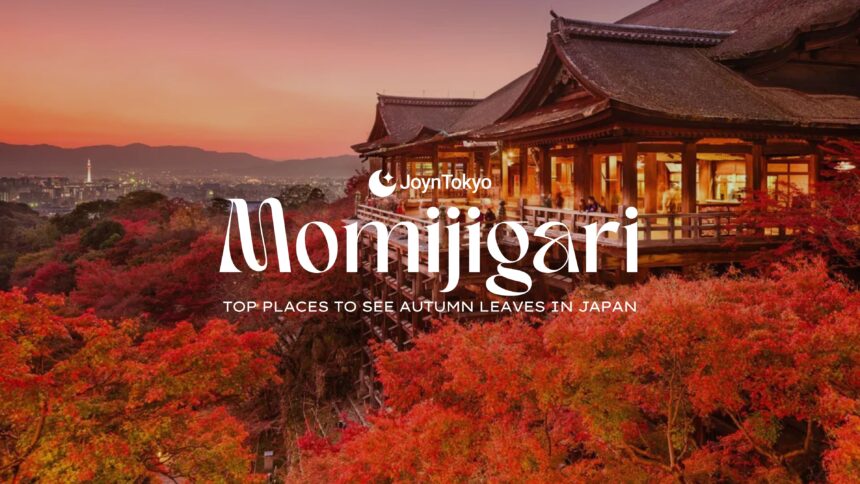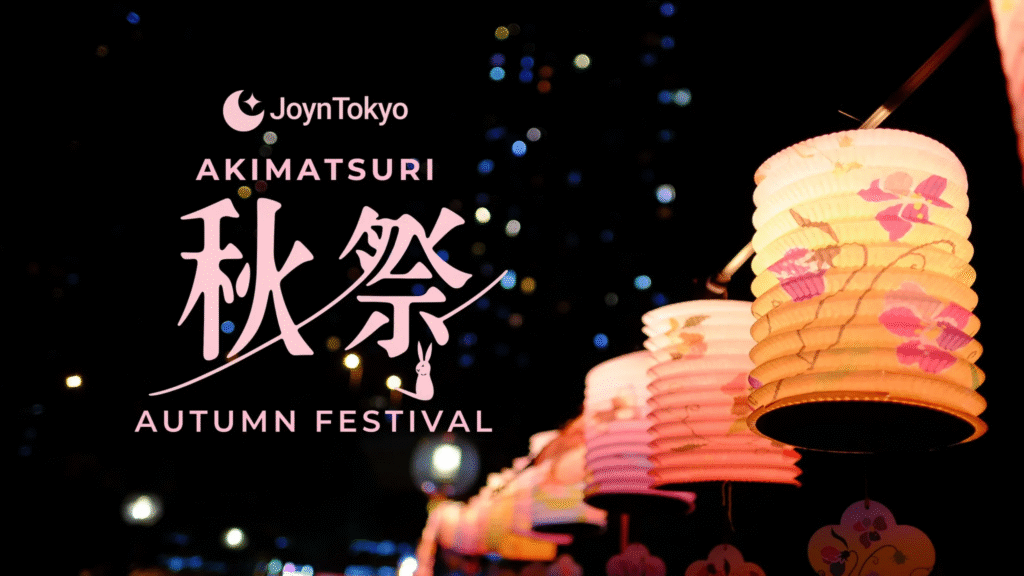Every autumn, Japan turns into a breathtaking landscape of fiery reds, golden yellows, and warm oranges. This seasonal tradition, known as momijigari, is more than sightseeing — it is a cultural practice that dates back over a thousand years. For foreigners living in Japan or visiting in 2025, autumn leaves in Japan combine nature, culture, and community in an unforgettable experience.
What Momijigari Means for Autumn Leaves in Japan
The word momijigari combines momiji (autumn leaves, especially maples) and gari (hunting). While it literally means “maple leaf hunting,” it refers to appreciating autumn scenery outdoors. Much like spring’s cherry blossom viewing (hanami), momijigari reflects Japan’s deep respect for seasonal change and the fleeting beauty of nature.
Autumn Leaves Festivals and Seasonal Culture in Japan
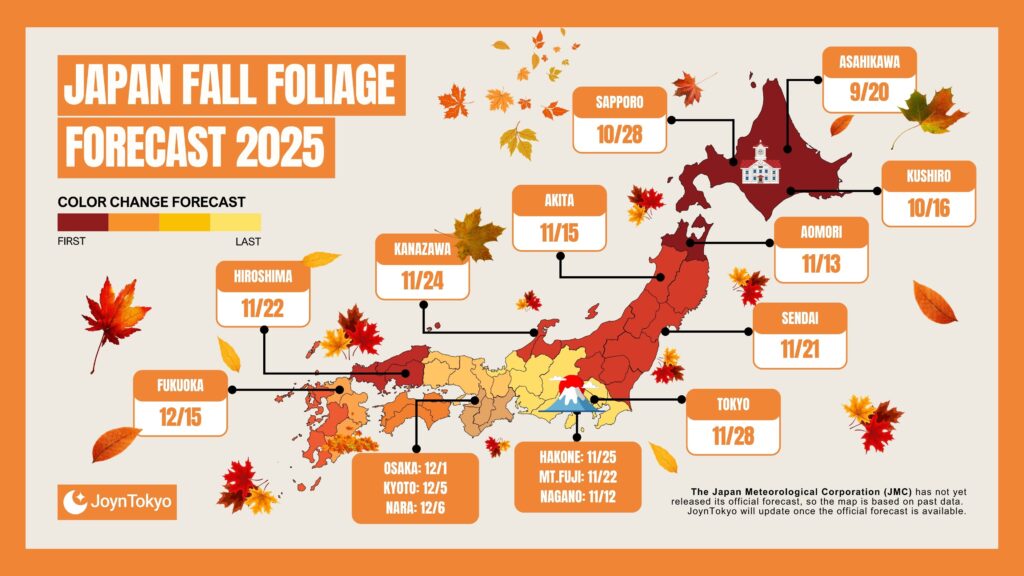
The Japan Meteorological Corporation (JMC) has still not published its official forecast, so the above map is based on historical estimations. Once the JMC releases its official forecast, JoynTokyo will update accordingly.
Momijigari is not only about visiting scenic spots, it also lives on through seasonal festivals that celebrate autumn beauty. Many temples, gardens, and parks hold evening illuminations, where maple and ginkgo trees are lit after sunset, creating a magical atmosphere. Food stalls offering roasted chestnuts, sweet potatoes, and warm sake add to the festive mood, while families and couples enjoy picnics and local specialties under the glowing trees.
In some regions, festivals include traditional activities such as tea ceremonies, folk dances, or historical parades, linking the appreciation of autumn leaves in Japan to cultural heritage. For visitors, these events offer a chance to see how Japanese people blend nature, food, and art into one seasonal celebration.
Best Places to See Autumn Leaves in Japan (2025)
The timing of autumn colors varies across Japan. In 2025, expect peak viewing from late September in Hokkaido to late November in Kyoto and Tokyo. Below are some of the best destinations for autumn leaf viewing in Japan:
| Spot | Location | Peak Season (2025) | Highlights |
|---|---|---|---|
| Rikugien Garden | Tokyo (Bunkyo) | Early–Late Nov | Edo-period strolling garden, pond reflections, famous evening illuminations |
| Meiji Jingu Gaien | Tokyo (Shinjuku/Minato) | Mid–Late Nov | Iconic ginkgo tree avenue, golden tunnel effect, lively urban setting |
| Showa Kinen Park | Tokyo (Tachikawa) | Mid–Late Nov | Vast park with ginkgo promenades, cycling paths, family-friendly atmosphere |
| Kiyomizu-dera Temple | Kyoto | Mid–Late Nov | UNESCO site, panoramic views from temple stage, evening light-ups |
| Tofuku-ji Temple | Kyoto | Mid–Late Nov | Famous Tsutenkyo Bridge, fiery maple valley, Zen garden backdrop |
| Eikando Temple | Kyoto | Mid–Late Nov | Beloved autumn temple, pond reflections, atmospheric night illuminations |
| Irohazaka & Kegon Falls | Nikko (Tochigi) | Mid Oct | Scenic mountain drive, dramatic waterfall framed by foliage |
| Daisetsuzan National Park | Hokkaido | Late Sep–Early Oct | First autumn colors in Japan, vast alpine scenery, hiking paradise |
| Jozankei Onsen | Hokkaido (near Sapporo) | Late Sep–Early Oct | Hot spring town, mountain maples, outdoor baths with autumn views |
| Lake Kawaguchi (Momiji Tunnel) | Yamanashi (Fuji Five Lakes) | Early–Late Nov | Iconic Mt. Fuji framed by maples, lakeside illuminations, top photo spot |
Rikugien Garden
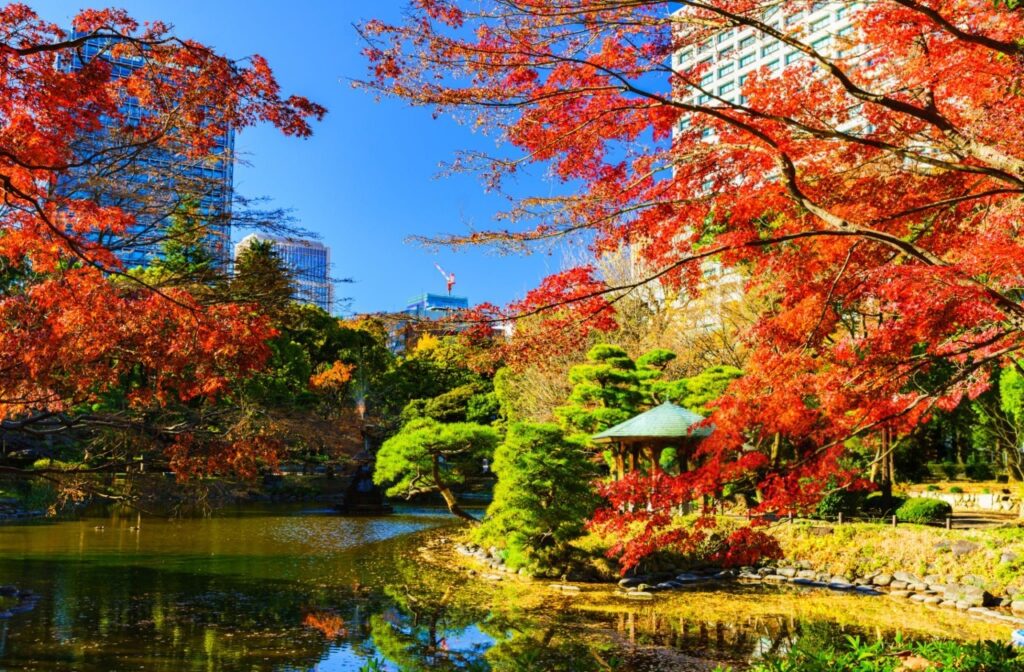
- Location: Bunkyo, Tokyo
- Peak Season: Early to late November
- Hours: 9:00 – 17:00 (extended hours during illuminations)
Rikugien is one of Tokyo’s finest Edo-period gardens, designed as a strolling garden where each turn reveals a new scenic view. In autumn, the garden transforms into a glowing canvas of maple and ginkgo trees, their colors reflected in the central pond. Evening illuminations add a magical atmosphere, making this one of the most romantic and atmospheric spots to see autumn leaves in the Tokyo.
Meiji Jingu Gaien
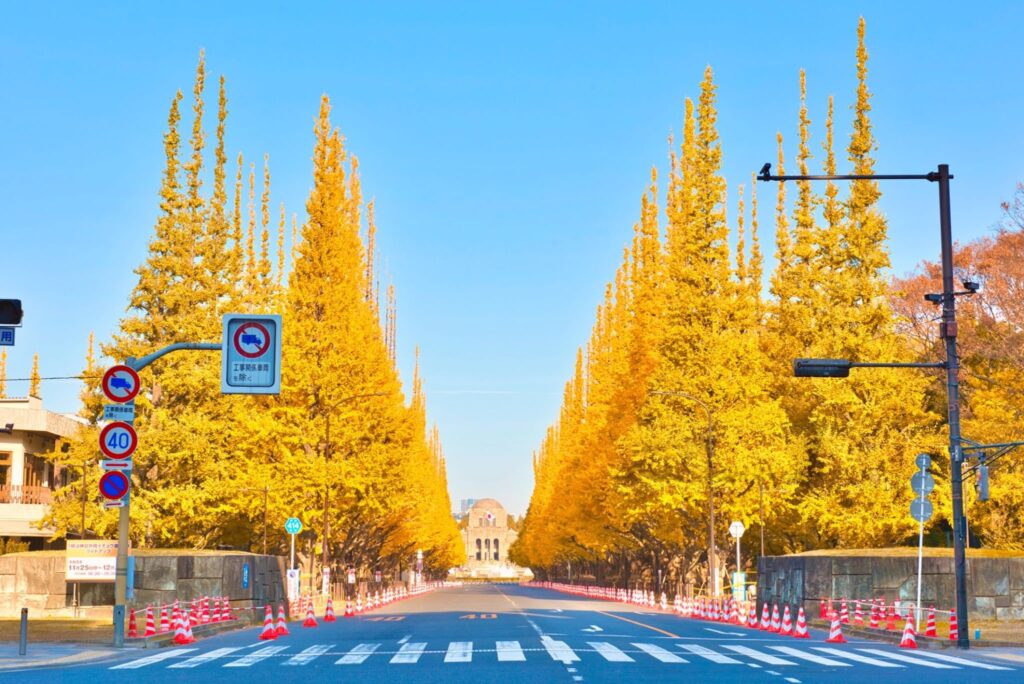
- Location: Shinjuku/Minato, Tokyo
- Peak Season: Mid to late November
- Hours: Open all day (street and park area)
Meiji Jingu Gaien is famous for its long avenue of ginkgo trees, which turn a golden yellow in late November. The symmetrical rows of trees create one of the most photographed autumn streets in Japan, often featured in travel magazines. It’s a lively area where visitors can combine leaf-viewing with visits to cafés, art galleries, and stores nearby.
Showa Kinen Park
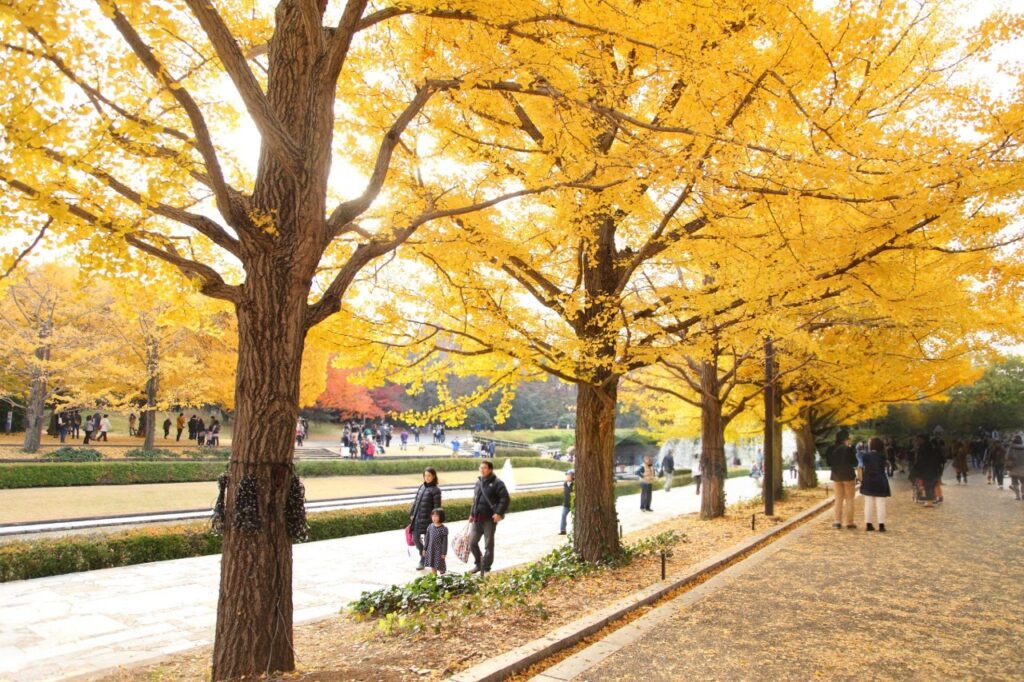
- Location: Tachikawa, Tokyo
- Peak Season: Mid to late November
- Hours: 9:30 – 17:00
Showa Kinen Park is one of the largest parks in Tokyo, offering expansive lawns, seasonal flower gardens, and long tree-lined promenades. In autumn, the park’s vividly colored ginkgo and maple trees seem to shine, drawing families, joggers, and photographers alike. Its wide open spaces make it an ideal place for picnics or leisurely cycling while enjoying the crisp fall air.
Kiyomizu-dera Temple
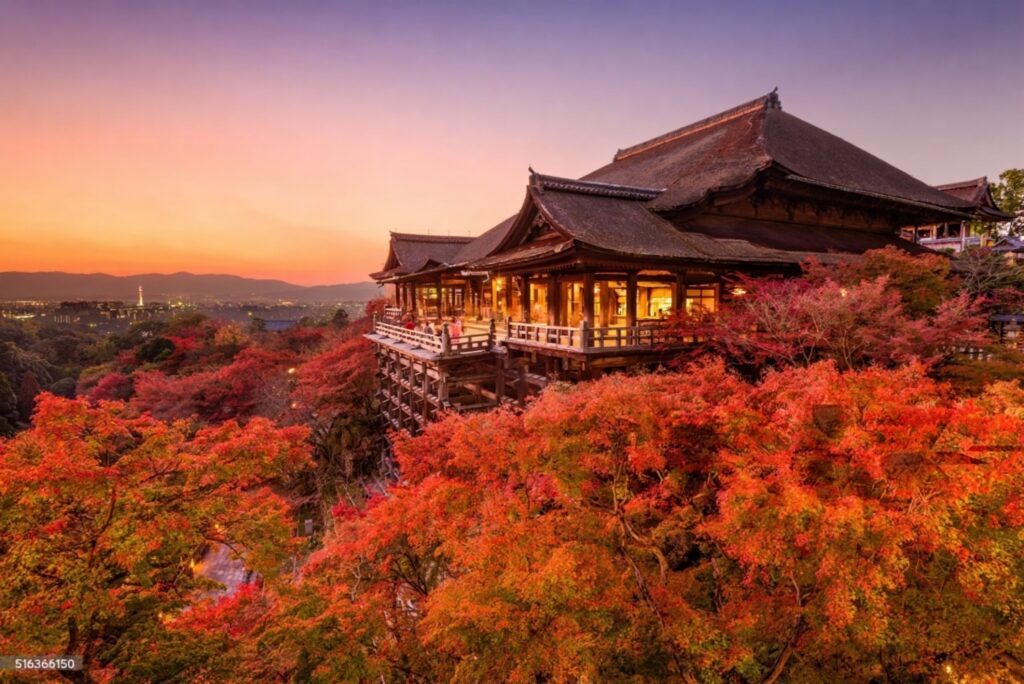
- Location: Kyoto City, Kyoto Prefecture
- Peak Season: Mid to late November
- Hours: 6:00 – 18:00 (extended hours during illuminations)
Kiyomizu-dera is a UNESCO World Heritage site and one of Kyoto’s most iconic landmarks. From its wooden stage, visitors can enjoy sweeping views of the city framed by bright red maples that cover the hillside. The temple’s evening illuminations further enhance the mystical atmosphere, making it one of the most sought-after spots for autumn leaf viewing.
Tofuku-ji Temple
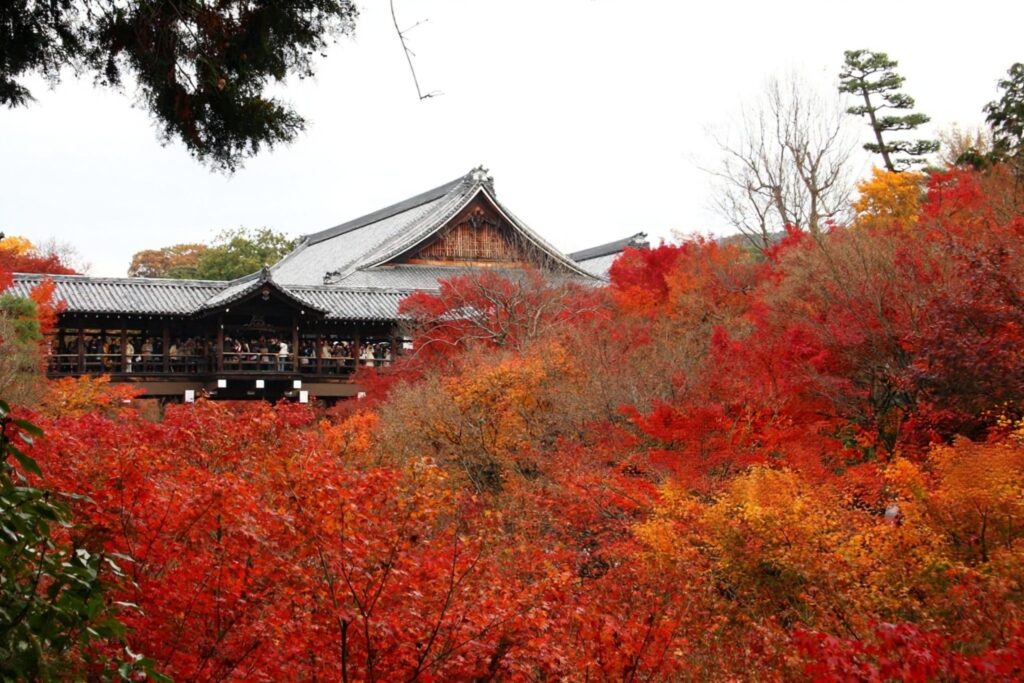
- Location: Kyoto City, Kyoto Prefecture
- Peak Season: Mid to late November
- Hours: 8:30 – 16:30
Tofuku-ji is renowned for its Zen gardens and the dramatic sight of thousands of maple trees visible from the Tsutenkyo Bridge. The vibrant leaves create a fiery valley that feels almost otherworldly in autumn. Its combination of architecture, gardens, and seasonal colors makes it one of the most celebrated destinations to see Autumn leaves in Japan.
Eikando Temple

- Location: Kyoto City, Kyoto Prefecture
- Peak Season: Mid to late November
- Hours: 9:00 – 17:00 (evening illuminations available)
Eikando is one of Kyoto’s most beloved autumn temples, best known for its stunning night illuminations. Its gardens feature ponds that perfectly reflect the fiery maples, creating a serene yet dramatic spectacle. The temple’s long association with autumn beauty has made it a classic choice for both locals and travelers.
Daisetsuzan National Park
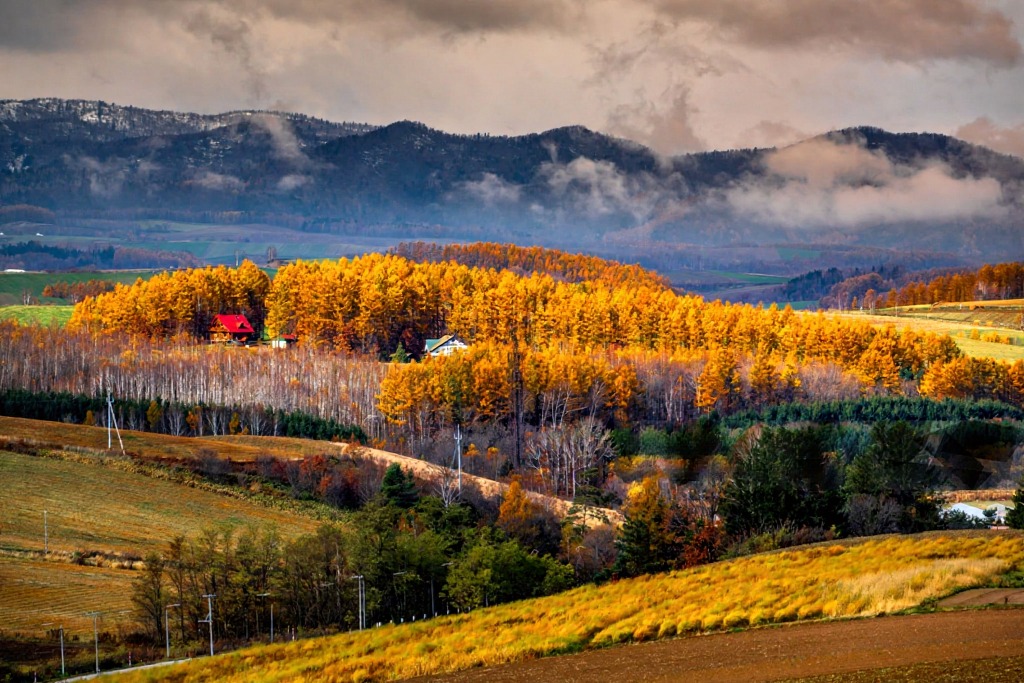
- Location: Hokkaido
- Peak Season: Late September – Early October
- Hours: Open access for hiking and outdoor activities
Daisetsuzan is the first place in Japan to welcome autumn, with vast alpine landscapes covered in fiery reds and oranges by late September. It’s a paradise for hikers, offering trails that lead through dramatic peaks, hot spring valleys, and untouched wilderness. The sheer scale of the scenery makes this one of the most awe-inspiring autumn leaf viewing destinations.
Jozankei Onsen
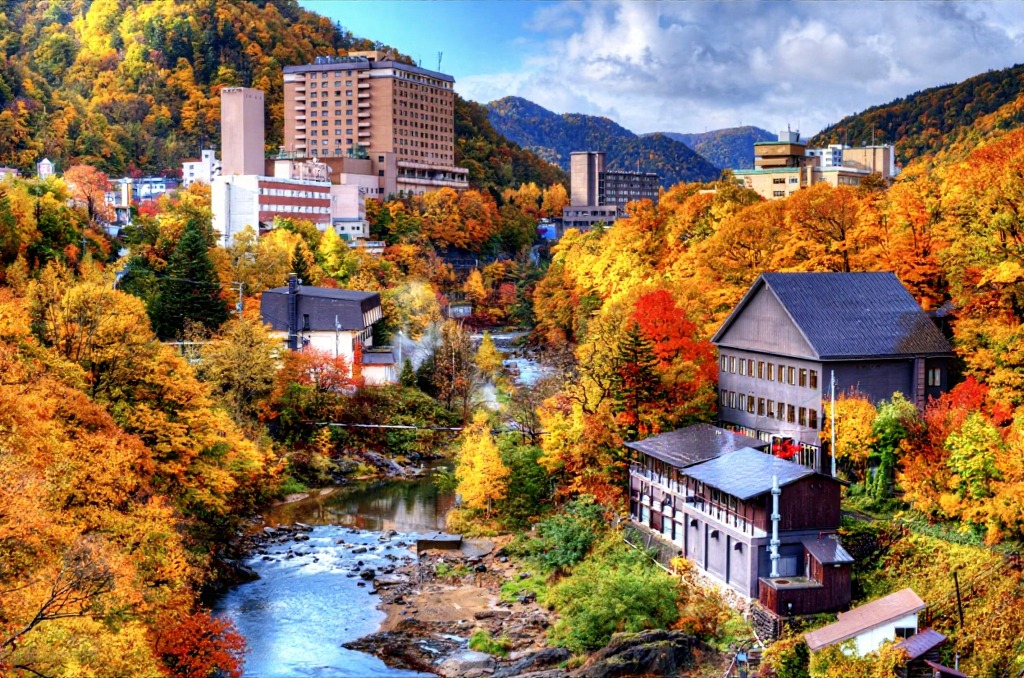
- Location: Near Sapporo, Hokkaido
- Peak Season: Late September – Early October
- Hours: Hot springs and inns vary by facility
Jozankei is a charming hot spring town located just outside Sapporo, famous for its combination of autumn leaves and steaming open-air baths. Visitors can soak in mineral-rich waters while surrounded by maple-covered mountainsides. The contrast between crisp autumn air and soothing hot springs makes this a uniquely Japanese way to enjoy the season.
Lake Kawaguchiko (Momiji Tunnel)
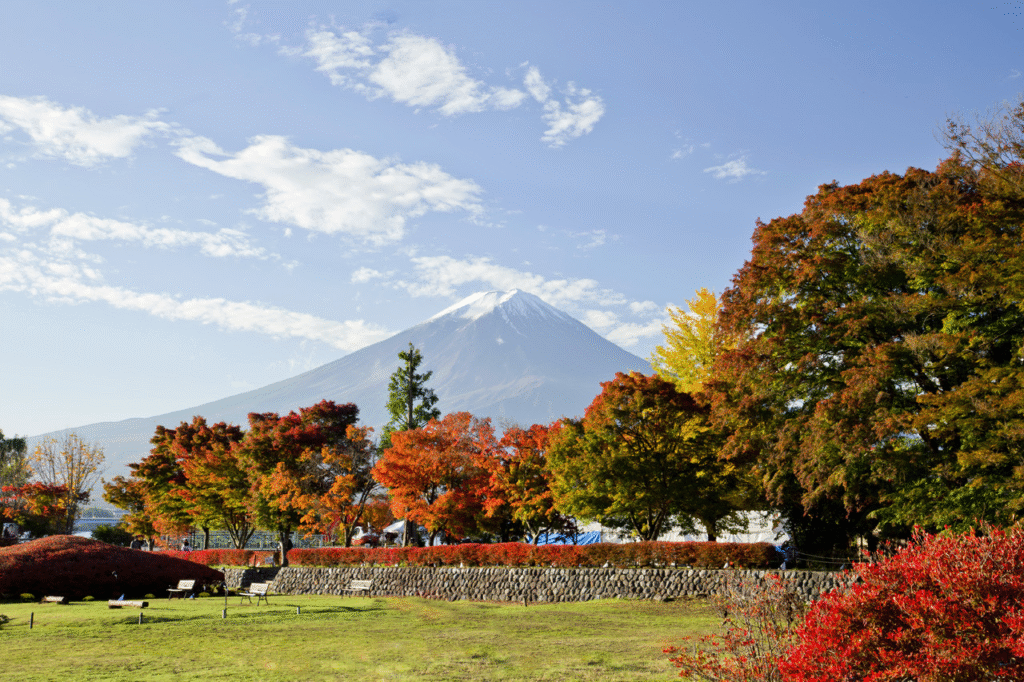
- Location: Fuji Five Lakes, Yamanashi Prefecture
- Peak Season: Early to late November
- Hours: Open all day
Lake Kawaguchi is one of the most iconic places to view autumn leaves, especially at the Momiji Tunnel where fiery maples perfectly frame Mount Fuji. The lakeshore comes alive with color, attracting photographers from around the world. Evening light-ups along the lake create an unforgettable atmosphere, blending Japan’s most famous mountain with its seasonal beauty.
How Japanese People Enjoy Autumn Leaves
For locals, autumn leaf viewing festival is more than sightseeing. Many families and couples bring seasonal bento lunches, enjoy picnics under the trees, or combine the outing with hot spring visits. Food stalls at festivals often serve autumn specialties like roasted chestnuts, sweet potatoes, and grilled fish. Photography is also an essential part of the experience, with both amateurs and professionals capturing the fleeting beauty of the season.
Tips for Foreign Visitors to See Autumn Leaves in Japan

The best times to see Autumn leaves in Japan are Late September in Hokkaido to Late November in Tokyo and Kyoto!
- Crowds: Popular spots can be busy, so try weekday mornings.
- Clothing: Bring layers, autumn evenings can be chilly. Also, the festival is best experienced in the forest or between or on the mountains… but you will be surrounded by numerous bugs. It is better to wear long-sleeves so you do not get bitten by them.
- Transport: Most spots are accessible by train: JR Pass holders can easily reach Nikko, Kyoto, or Fuji Five Lakes. However, some spots are in the mountains or the countryside, where no trains or buses are running nearby, so make sure to check the route in advance to be well prepared.
Experiencing The Magic of Autumn Leaves in Japan
Autumn Leaf viewing festival, or Momijigari, in 2025 offers foreigners a way to connect deeply with Japanese culture. From the illuminated gardens of Tokyo to the golden valleys of Kyoto, and from hot springs of Hokkaido to Mount Fuji’s iconic vista, autumn leaf viewing is a tradition that blends beauty, history, and seasonal joy. Experiencing this festival is not just about sightseeing, it is about sharing in Japan’s centuries-old appreciation for nature’s fleeting wonders.
For more Autumn Festivals and to learn about Autumn in Japan check out:


